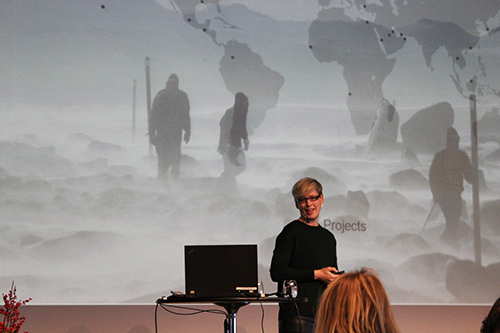Architecture and urban design as competitive tools

Tonje Frydenlund from award-winning design and architecture company Snøhetta showcased good examples of modern and engaging urban spaces that give the space to the people and create encounters. Mitchell Reardon from Nordregio asked Frydenlund a few follow-up questions on Nordic design:
Reardon: “It really struck me how the name of your company Snøhetta, is from an impressive mountain, and the Opera House in Oslo is such a strong reflection of Norwegian, and Nordic culture and identity. What is the role of architecture and city design in helping to build a national identity?”
Frydenlund: “There is a tendency to work in two key directions: On one hand, where you have symbolic buildings, which are major public investments that intend to have a transformative impact in terms of city planning and development. Oslo’s opera house for instance was developed in somewhat of a no-go part of town, and through its design and construction it supported the transformation of the total area, bringing it back to the public. Our design intended to do that – to create a landscape and cityscape together with the building that people can use in a broad range of ways. Then you have the other approach, where you plan neighbourhoods very clearly in city development strategies, which are crucial for ensuring that wider environmental goals are achieved within these projects.”
Reardon: “Nordic design and architecture are very much in vogue around the world right now, and Snøhetta’s success shows that very clearly, how do you think Nordic cities and firms working with architecture and design can further capitalise on these things?”
Frydenlund: “I think that the Nordic values of democracy and humanism are key factors that our city regions can prosper on and market as a way of showing their competitiveness and attractiveness, and for attracting people to move here. This is in part shown by individual architectural pieces, but it’s more generally about how they are embraced by society from a cultural perspective.